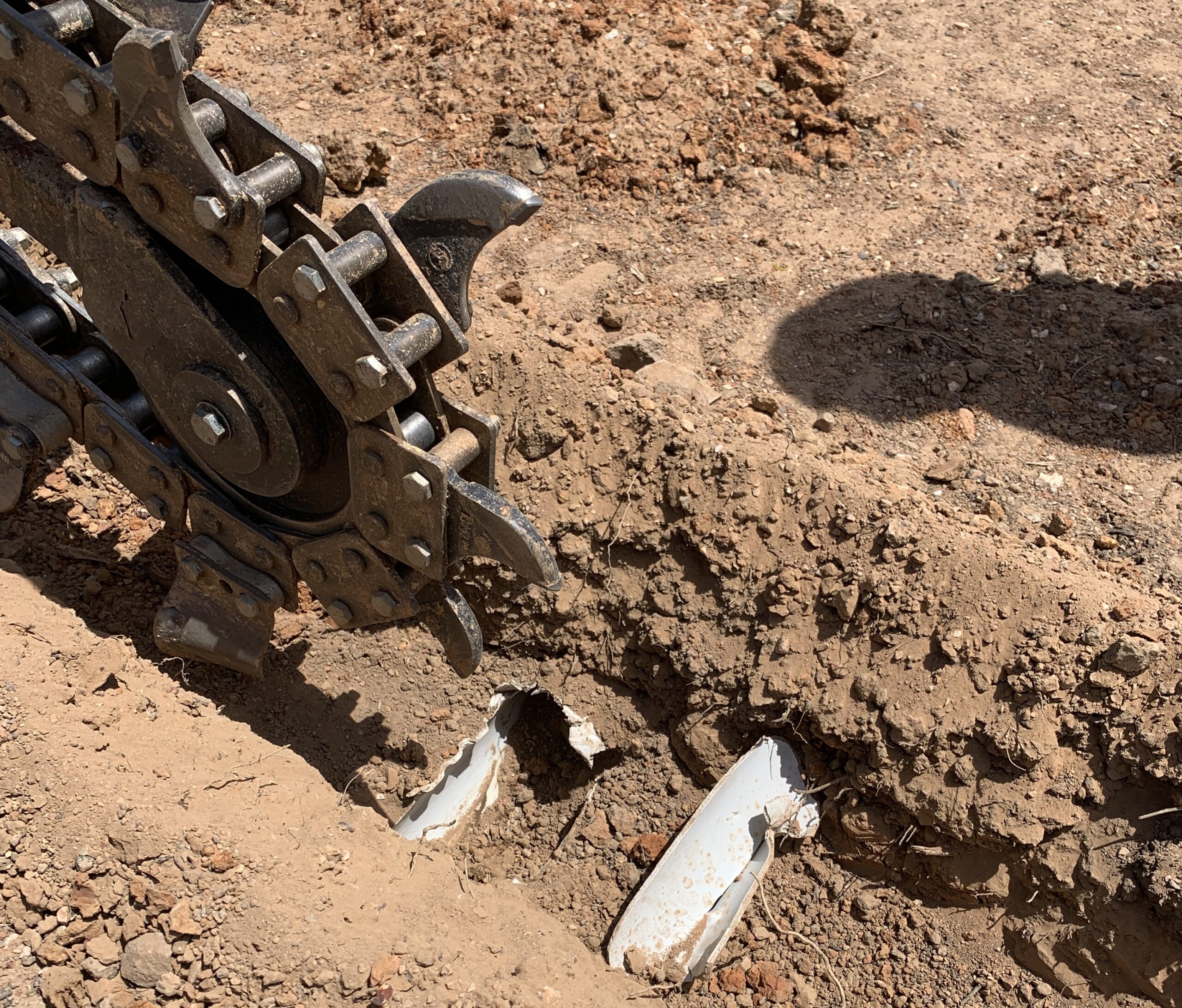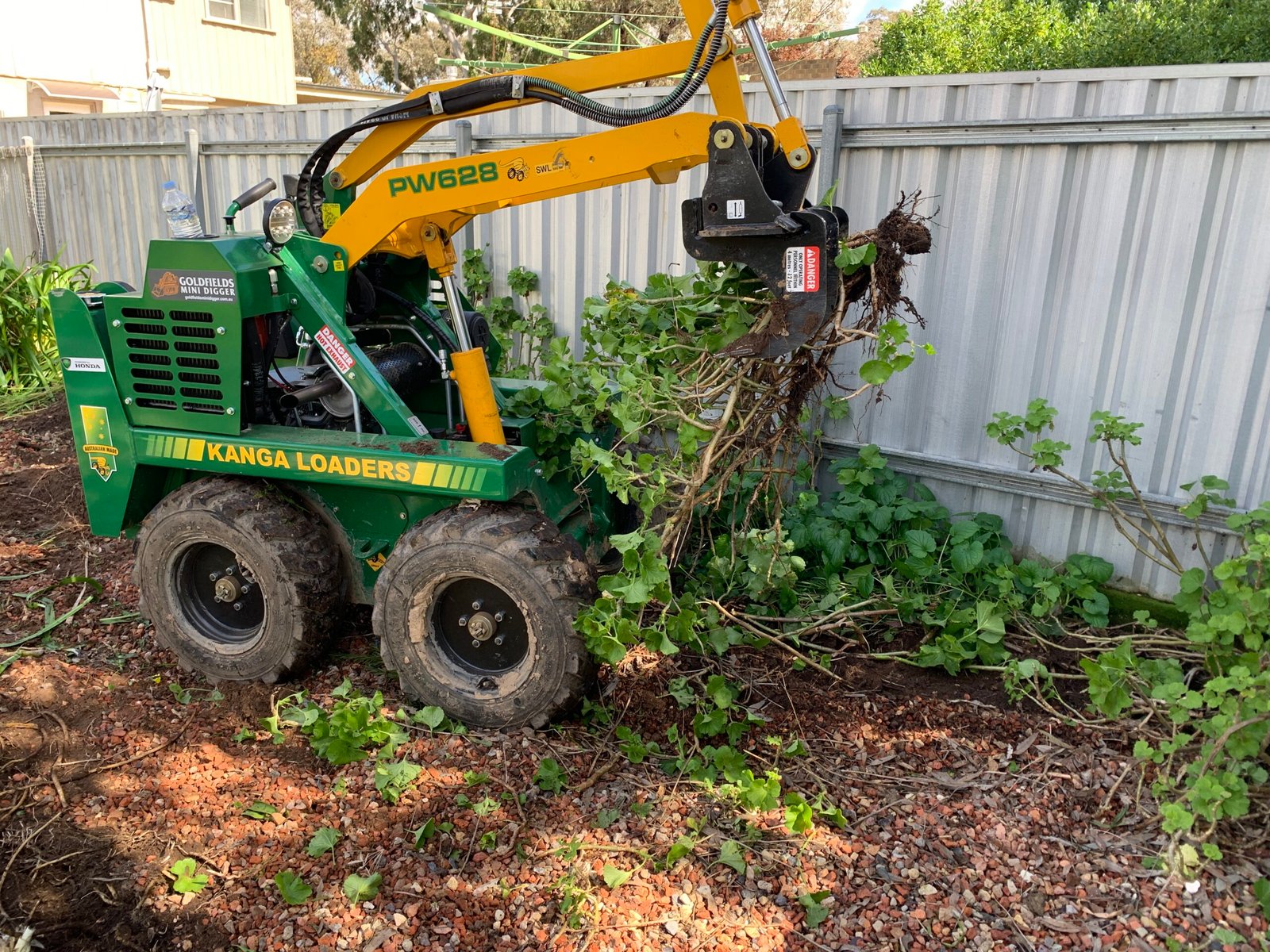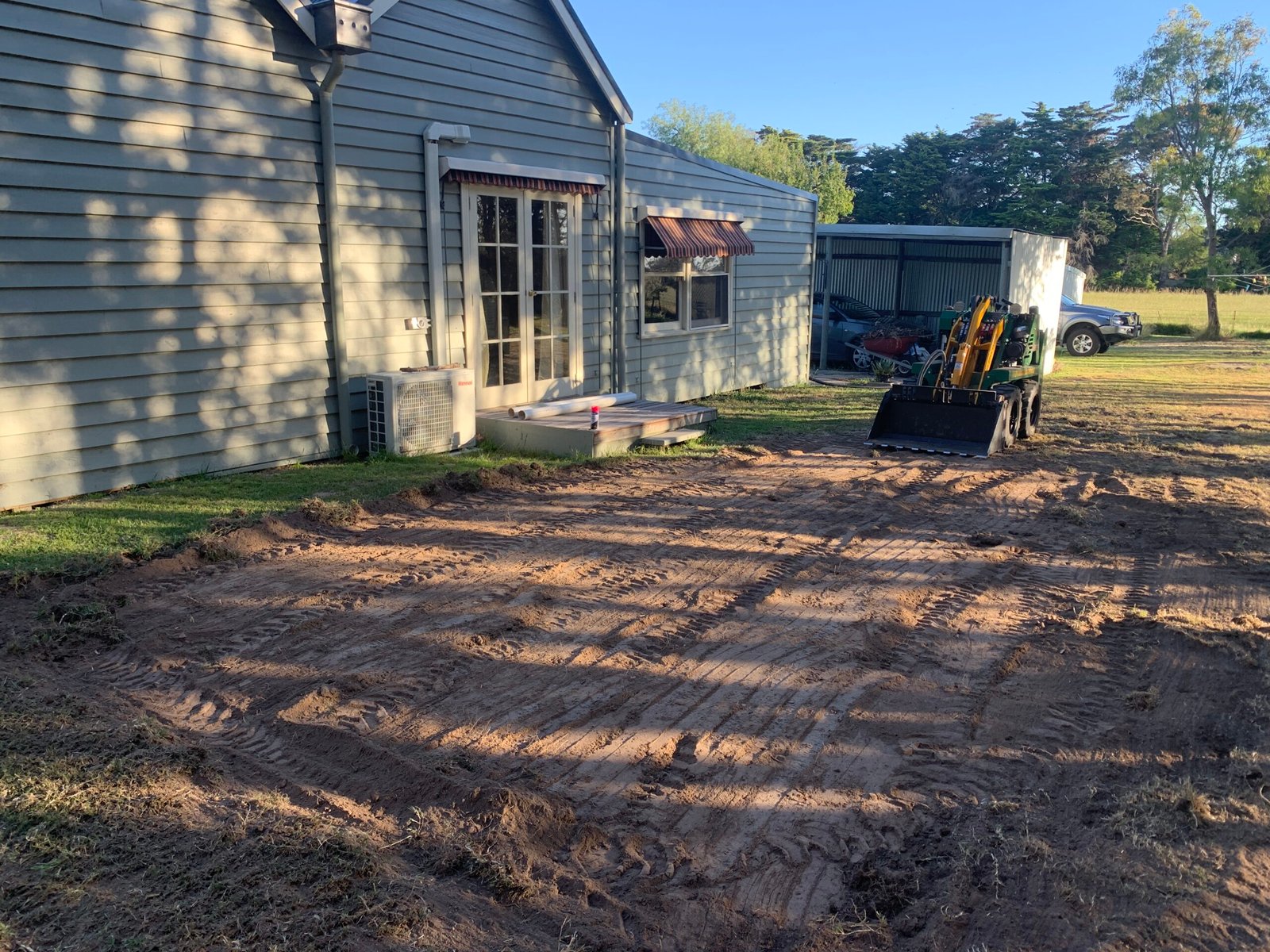Tips
Here are some tips to be considered for before any work is carried out onsite that can be both useful and safe and help prevent possible damage to property and services.
Quicklist
Check for underground services
Clear area of debris and obstacles (branches, vehicles etc)
Mark out where work is to be done
Allow at least 1100mm width for access of our Kanga Mini Loader
be mindful if excavating near medium/large trees of large roots
Map your work when finished (when installing services in a trench)
DIAL BEFORE YOU DIG – THE ESSENTIAL FIRST STEP
If you are about to undertake any ripping, trenching or hole drilling and are either unsure or do not know if there are any services in the vicinity or the proposed works it is essential to visit www.byda.com.au (or click on logo above), it is a free service but you need to register. If you need assistance with this we can assist if requested. ‘Services’ can include Telstra, NBN, Gas, Water, electricity, drainage and more. Most plans from service providers are automated and could be emailed to you within minutes of an enquiry or the next working day.
BYDA* may not show internal/additional services that may have been added by previous owners of a property eg: electricity from a house to a shed or water from tanks to trough and taps etc. Rural properties can still have services running through them although usually deeper but if pays to check.
*Before You Dig Australia

Don't let this happen
expose known services before digging

TRENCHING
Trenching is usually undertaken to install new services such as water, electricity, telephone & data etc and can be unforgiving to anything that may lie beneath the ground hence the need to check before work commences. Tree roots can also a problem although trenching can cut through smaller roots.
- Hand dig to expose known services first
- clear a path and mark where trench is to go

Post Holes
As with trenching care should be taken as not to hit any possible services, especially in urban properties. Rural properties usually have an average hole depth of 600mm (2ft) for fence posts, sometimes deeper which is on or more than the required depth of electricity and telephone/internet cables.
- Clear area of branches, wire & debris
- Mark out where the holes need to be

Mini ripper
our mini ripper is ideal for loosening hard ground before levelling and removing small shrubs and gardens. It pays to ensure there are no water pipes or stormwater pipes inside 200mm (8 inches) of the surface.
- Ensure at least 200mm deep is clear of pipes
- Prune small shrubs as low as possible to the ground

4 in 1 bucket
our 4 in 1 bucket can be used to move and remove soil, gravel and other material and level uneven ground. Ensure there are no obstacles for the mini loader and mark any non moveable items such as pits, posts and taps clearly.
- Ensure non moveable items ar clearly marked
- Have somewhere to put excess material

rotary tiller/hoe
The rotary tiller is great for lawn & turf preparation and soil rejuvenation. It cuts 150mm deep. It is essential to check that there are no water pipes or stormwater pipes inside 200mm (8 inches) of the surface, these pipes may not be indicated in a BYDA enquiry.
- Ensure at least 175-200mm deep is clear of pipes
- Have any existing lawn/grass cut down as far as possible and if needed apply poison weeks prior to work commencing if sowing new seed.

Map your work when completed
It is always a good idea to record where you have excavated and buried any private services ie: power, storm/water, etc so they can be easily located in the future by yourself or a new property owner. Maps can be hand drawn or on a satellite screenshot, colour coded, labelled and/or include measurements so long as they give some kind of indication where services are.
Disclaimer
It is the responsibility of the customer to do their best to locate underground services. Goldfields Mini Digger Service is not liable for any damage caused to underground services, grass or tyre marks if given a directive to excavate or undertake works in an area by the customer/landholder.

